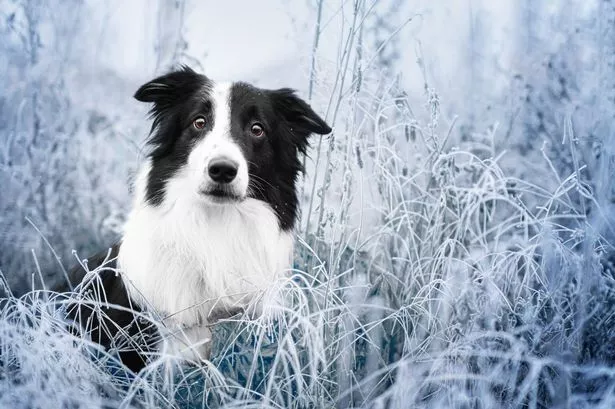
As winter approaches, a leading vet has warned dog owners to be on the lookout for a specific behaviour that their furry friends might display during the colder months
Ruairi Scott Byrne Audience Editor, Emilia Randall GAU Writer and Alice Rush
19:00, 15 Nov 2025
Dog owners should look out for their pets doing this – stock photo
As winter arrives, a top vet is warning dog owners to look out for one particular behaviour their four-legged companions might show during the colder weather.
Sean McCormack, Head Vet at Tails.com, has advised pet owners to keep a close eye on their dogs ‘ paws and stay vigilant for any unusual attention they give to them.
The winter period presents multiple hazards that can harm the delicate pads on dogs’ paws, from grit and road salt to ice and snow.
Sean said: “From injury prevention to post-walk treatment, winter paw care is crucial as the seasons shift. Autumn and winter bring wet, icy conditions, with rain and even snow, which many dogs love.
“While winter walks can be magical, especially if your dog is experiencing snow for the first time, they also come with added risks. You can keep your dog’s paws healthy, pain-free and ready for every winter adventure.”, reports the Irish Mirror.
“As the weather turns colder, our dogs are exposed to harsher conditions on their daily walks. Grit, ice and de-icing salts can be quite abrasive or irritating to paw pads. These substances, commonly used to keep pavements safe for people, can cause discomfort, dryness, cracking, and in some cases, chemical burns.
“While dogs’ paws are naturally resilient, they’re not immune to damage. Cold, wet, or chemically treated surfaces can lead to real issues, especially for dogs walking daily on busy, gritted routes.”, reports the Express. “Beyond chemicals, icy conditions pose a physical hazard; sharp ice can cause small cuts to bare paws. Furthermore, ice results in slick surfaces which can increase the risk of slips and falls, not just for dogs, but for their humans too.”
As the cold weather sets in, one vet is telling dog-owners to look at one thing their dogs may start doing this winter
Staying vigilant is crucial when it comes to your dog’s paws, and prevention should always come before treatment, reports the Mirror. If your dog is persistently licking their paws following a walk, or you spot any redness or cracking, it’s time to act.
Sean said: “Clean the area with warm water, gently pat it dry, and apply a dog-safe soothing balm. If symptoms persist or get worse, speak to your vet, it could be a sign of an infection or allergic reaction.
“One more thing to double-check is your dog’s nails; make sure their nails and the fur around their paws are kept trimmed. Overgrown hair between the toes can trap ice balls and moisture, which causes discomfort. If you notice snow build-up, soak it off in warm water, don’t pull, as that can hurt.”
Prevention can often be straightforward with proper preparation. “Before heading out for a walk, make sure your dog’s route is sensible in freezing conditions, and avoid heavily gritted areas if you can,” said Sean.
Applying a thin layer of dog-safe paw balm or wax will create a protective barrier against chemicals and salt. These work like moisturisers for humans, but are specifically designed for dogs
.
(Image: Getty)
Never use human beauty products on your dog as they often contain ingredients that aren’t safe for pets. Sean advised: “After walks, especially if you’ve been over salted or icy areas, rinse your dog’s paws with water and dry them gently. This helps remove any salt, grit or chemical residue that could cause irritation, or be ingested if your dog licks their paws later.
“Always check between their toes for trapped debris, including grit that can lodge between paw pads or get caught in the fur around their feet. While some people recommend dog boots as a solution to this, I’m not the biggest fan for a couple of reasons.
“First of all, most dogs hate them. You may have seen ‘funny’ social media videos of dogs with boots on walking oddly, hopping or dancing around in them, even walking on their two front legs with hind limbs in the air. But it’s not funny to force them into something that makes them uncomfortable.
“Second, walking in boots can change a dog’s gait, or how it’s moving, and can lead to chafing or rubbing injuries, even muscle tension or discomfort elsewhere as they compensate for this new way of walking.”





